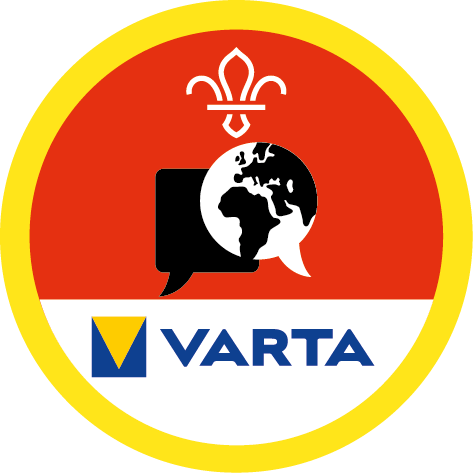Discover how Scouts have always helped
You’ll need
- A4 paper
- Pens or pencils
- Printed copies or access to digital copies of the ‘Refugees and Scout heritage’ sheet
- Printed copies or access to digital copies of the ‘Images from the Scouts heritage collection’ sheet
- Printed copies or access to digital copies of the ‘Empathy umbrella’ sheet (optional)
Before you begin
- Use the safety checklist to help you plan and risk assess your activity. Additional help to carry out your risk assessment, including examples can be found here. Don’t forget to make sure all young people and adults involved in the activity know how to take part safely.
- Make sure you’ll have enough adult helpers. You may need some parents and carers to help if you’re short on helpers.
This activity was originally part of the ‘Moving Connections’ heritage project. Find out more in the Scouts’ Refugee response resource.
Planning this activity
- You might like to read about how Scouts have supported refugees through the years in the ‘Refugees and Scout heritage’ sheet.
- Print out the images from the ‘Images from the Scouts heritage collection’ sheet. You might want some extra copies of Image A if you have a larger group so that everyone will be able to see it. If you don’t have access to a printer, you could use a device to view the pictures on.
- If you want to use the ‘Empathy umbrella’ sheet, you'll need enough for one each or one per small group, depending on how you want to organise the activity. You might want to make some spares copies too.
- You could do this activity as part of World Refugee Day or Refugee Week, which take place in June.
How Scouts have always helped
- Gather everyone together.
- Ask if anyone knows the Scouts Promise or Scouts Values. How that might encourage us to help people in need?
- Explain that Scouts have always kept their Promise and Values throughout history. Scouts have a proud history of supporting people in crisis and responding to global disasters, including helping refugees and displaced children. Scouts around the world have responded to the refugee crisis in many ways, from delivering practical support in refugee camps to learning about the issue and making contact with refugees locally. Why do you think the Scouts felt they had to help refugees and displaced people? What values do we share as Scouts?
- Give people copies of or hold up the images from the Scouts Heritage collection of Scouts helping people in need throughout history.
- Everyone should start by looking at the thank you card that was sent out to Scouts who welcomed refugees during the Second World War. Together, everyone should talk out is happening in the picture. What do people think umbrella the Scout is holding symbolises?
- Explain that umbrellas help to protect and shelter everyone during a storm or bad weather. Tell people one idea is that the umbrella could represent how Scouts look after people and shelter people when they need it most too.
Take a trip back in time
- Now, look at and talk through the photographs from the Heritage Collection, which are images B to G from the sheet. The Scouts Heritage Collection holds photographs, diaries, letters and objects which tell the story of Scouts over it’s a 100-year history.
- Ask if anyone knows what they might be. The images are:
- Image A: a thank you card from Scouts sent to Scouts who helped during the Second World War
- Image B: Scout International Relief Service (SIRS) volunteers preparing to leave
- Image C: Images of SIRS volunteers packing provisions
- Image D: SIRS volunteers giving Dutch refugees new clothes
- Image E: SIRS volunteers helping to get rid of head lice
- Image F: Scouts helping evacuees in the UK
- Image G: Scout helping evacuees in the UK
- Everyone should get into small groups to look at and discuss the images. The images should be divided between the groups, so each group has 1 or 2 images each to look at.
- Ask each group to discuss what is shown in their image. Who are the people in the photo? How do you think they might be feeling? What would you do to help them if you were there?
- Everyone should write down some words that describe how the people in your picture might be feeling. People could do this individually or together as a group. You could use the ‘Empathy umbrella’ sheet for this or a piece of paper. We’re using an umbrella, just like in postcard.
- Everyone should gather back together and share the words they came up with. Are there any words in common?
What about now?
- Now, everyone should think about any current international crises and how people are having to leave their homes or countries. Do you think these words apply to modern refugees and displaced people?
- You could give some examples they might have heard of, such as the war in Ukraine or the conflict in Afghanistan.
- Everyone should think about how they could help refugees and displaced people in their local area. You could make welcoming messages, gather donations (such as clothing, toys, books, bikes or food), or fundraise for local causes helping refugees.
Reflection
This activity explored the history of Scouts’ support for refugees and displaced people. What impact has this activity had on everyone? How did this activity encourage everyone to develop empathy?
You may want to explore what empathy means. How is it different to sympathy?
Sympathy is a shared feeling, usually of sorrow, pity or compassion for another person.
Empathy is stronger than sympathy. It is the ability to put yourself in the place of another and understand someone else's feelings by identifying with them.
Safety
All activities must be safely managed. You must complete a thorough risk assessment and take appropriate steps to reduce risk. Use the safety checklist to help you plan and risk assess your activity. Always get approval for the activity, and have suitable supervision and an InTouch process.
- Online safety
Supervise young people when they’re online and give them advice about staying safe. Take a look at our online safety or bullying guidance. The NSPCC offers more advice and guidance, too. If you want to know more about specific social networks and games, Childnet has information and safety tips for apps. You can also report anything that’s worried you online to the Child Exploitation and Online Protection Command. As always, if you’ve got concerns about a young person’s welfare, including their online experiences, follow the Yellow Card to make a report.
It’s up to you how much information you share, and how you adapt the questions and support given, to the needs of the group.
This activity may be difficult for anyone who has had experience of being or is a refugee or displaced child. They might also be keen to share their experiences and ideas. Speak to them and their parent or carer beforehand, so that you can create a plan for how to make it a manageable and comfortable session for them. For example, would they prefer to share their experience or not? And are there any specific examples or situations you should avoid mentioning?
All Scout activities should be inclusive and accessible.
You can take action to support refugees and displaced children in our communities with these activities created with Save the Children UK.
If you want to find out more about the history of Scouting, you can visit the Our history page. If you want to share Scouts’ history with your group, you can also try the Race through time or Who do you think Scouts are? or Scouts around the globe activities.
Everyone can be encouraged and supported to share their thoughts.


